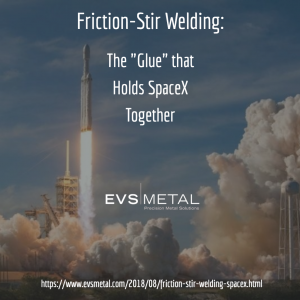Article Revised August 5th, 2022
 The following was excerpted from an AZO Materials article, which has since been removed. More about friction-stir welding and SpaceX can be found on the Cambridge Independent’s website.
The following was excerpted from an AZO Materials article, which has since been removed. More about friction-stir welding and SpaceX can be found on the Cambridge Independent’s website.
Friction stir welding (FSW) is a welding method that was devised by The Welding Institute Ltd. in the year 1991. Despite the fact that it was developed more than 30 years ago, it has seen a quick increase in demand over the past few years, specifically due to increased strength and durability requirements in modern engineering applications.
FSW is a unique method of combining metals, differing from conventional methods such as gas welding or arc welding in that it is a solid-state welding technique and doesn’t require either of the materials being combined to be melted.
Instead, they are softened to an extent that they can penetrate each other’s surface with a little help. This method produced exceptional mechanical properties such as fatigue strength and stiffness, as well as negligible defects in the weld region. Furthermore, this welding technique also reduces the wastage of materials and ensures an enhanced appearance with lower surface finishing requirements. Lastly, one of the most lauded benefits is that it does not have any harmful effects on the environment since toxic fumes are not produced in the complete process.
Recently, SpaceX—the aerospace manufacturing company led by Elon Musk—launched its Falcon Heavy rocket into space with a Tesla Roadster as the payload, featuring the use of friction stir welding. This aspect underscores FSW’s significance in the aerospace industry and its probable application in future engineering applications.
SpaceX design engineers employed FSW to connect the break-off fuel tanks in their rocket, which have a vital role in the propelling of the spacecraft after it enters space and settles in its orbit. The reason for this application was evidently the requirement of remarkable strength in break-off fuel tanks of such a powerful rocket, which cannot be fulfilled by traditional methods like liquid-state welding or non-permanent joints like rivets.





